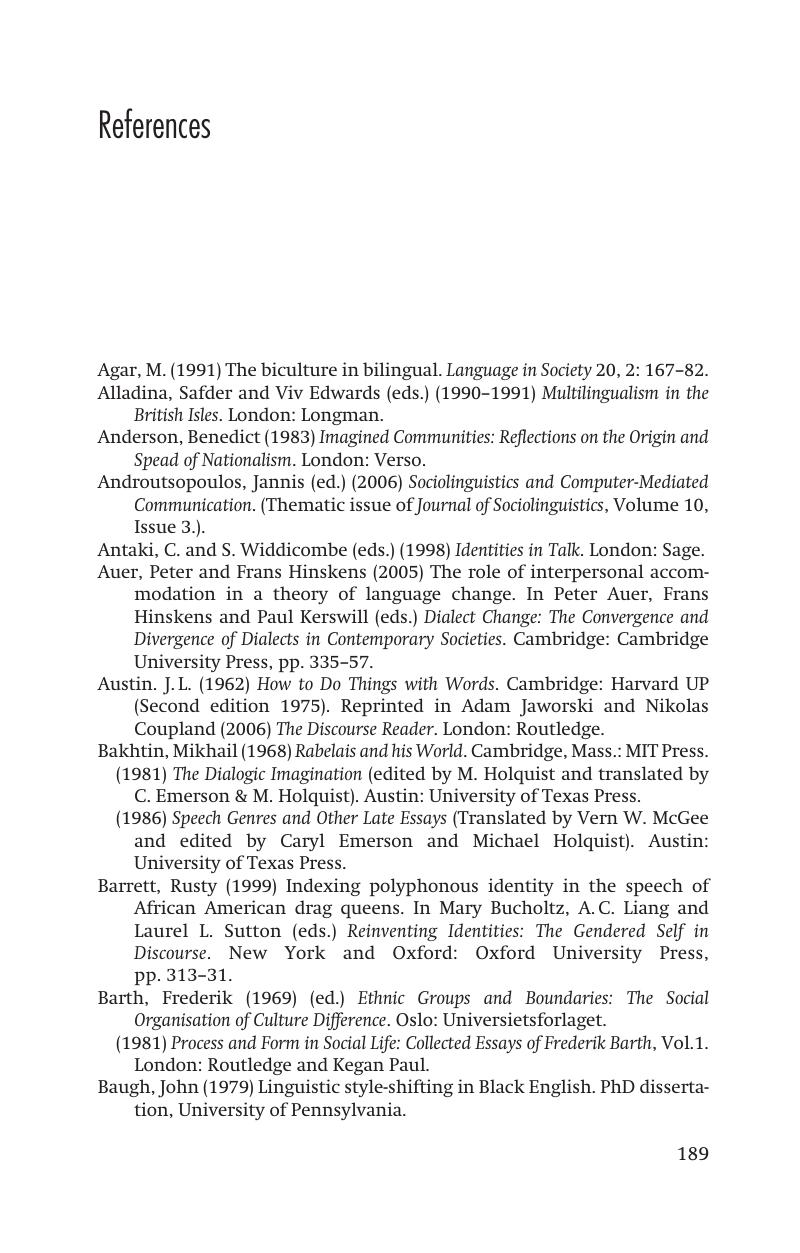Book contents
- Frontmatter
- Contents
- List of figures and tables
- Preface and acknowledgements
- Transcription conventions
- 1 Introduction
- 2 Style and meaning in sociolinguistic structure
- 3 Style for audiences
- 4 Sociolinguistic resources for styling
- 5 Styling social identities
- 6 High performance and identity stylisation
- 7 Coda: Style and social reality
- References
- Index
- References
References
Published online by Cambridge University Press: 14 May 2010
- Frontmatter
- Contents
- List of figures and tables
- Preface and acknowledgements
- Transcription conventions
- 1 Introduction
- 2 Style and meaning in sociolinguistic structure
- 3 Style for audiences
- 4 Sociolinguistic resources for styling
- 5 Styling social identities
- 6 High performance and identity stylisation
- 7 Coda: Style and social reality
- References
- Index
- References
Summary

- Type
- Chapter
- Information
- StyleLanguage Variation and Identity, pp. 189 - 205Publisher: Cambridge University PressPrint publication year: 2007



